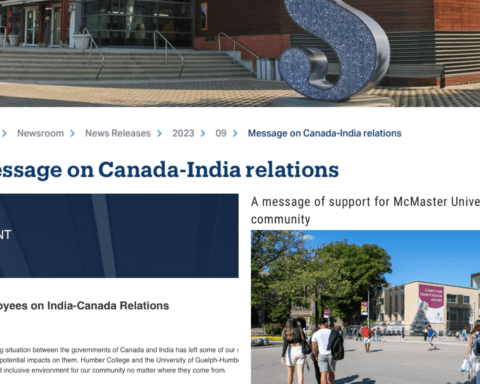Filipinos in Canada are expressing concern about Ottawa’s intention to support lower costs for remittance services.
Ed Fast, Minister of International Trade, told a Filipino gathering at the St. Mary’s church in Vancouver that Canada is working on measures to ensure safe, reliable and low-cost services to transfer money to family and friends outside of the country, helping to improve economic conditions abroad.
These transfers, known as remittances, represent a major source of income for millions of people around the world, and support a sustainable path out of poverty for the poorest and most vulnerable, he said.
To help reduce the costs of remittances services, Canada’s Economic Action Plan 2015 will invest $6 million over five years to introduce measures that will help enhance access to low-cost remittance services for Canadians, the minister said.
The Philippines is one of the top destinations for remittances from Canada.
“We will be comparing all the fees that are charged by companies and banks that are doing remittances to make sure that you know where to get the best price in terms of the cost of sending remittances back to the Philippines,” Fast said.
Lower Fees Doesn’t Mean Better Service
Some kababayans however said that the government may not be totally aware of what it takes to send and receive money in the Philippines, according to Balitang America.
Salve Didcott has been in Canada for 26 years and sends money to her family in the Philippines monthly. She said there’s more to sending remittances than just the fees.
Those in the money remittance business meantime say fees have actually been going down the past years as more and more money transfer companies enter the market. But they say lower fees don’t necessarily guarantee better service.
“Some are actually charging more, less exchange; and the other is the charge is less, but the exchange is high. There are too many (factors), as I’ve said the location, the price, the exchange rate as well,” she said.
Those in the money remittance business meantime say fees have actually been going down the past years as more and more money transfer companies enter the market. But they say lower fees don’t necessarily guarantee better service.
Canada’s Filipino Community Growing
World Bank estimates show Canada’s remittance industry is growing with about $24 billion sent in remittances in 2012. The Philippines is in the top three receiving countries of remittances from Canada with $2 billion sent that year.
Meanwhile, another report said more than 40,000 Filipinos became permanent residents of Canada in 2014, making the Philippines the top source country for Canadian immigration last year.
The Philippines had previously been the top source country in 2012, with China having been the top source country in 2013. Canada also issued nearly 47,000 visitor visas to Filipinos in 2014, a 56 percent increase since 2006. The number of new permanent residents from the Philippines is up from 14,004 in 2004, a near three-fold increase in just one decade.
Many of the Filipino newcomers originally came to Canada under the Live-In Caregiver Program, now simply the Caregiver Program after modifications made last November. The government of Canada’s immigration plan for 2015 states that it aims to convert between 26,000 and 30,000 caregivers to permanent resident status this year. In just a few short decades, Canada’s Filipino community has grown to become one of the country’s largest immigrant demographics.
The more than 700,000 people of Filipino descent in Canada make up one of the country’s larger diaspora communities, and this number is increasing constantly. Filipino workers in Canada are important to both the Canadian and Philippine economies.
During President Aquino’s historic visit, Canada and the Philippines signed a mutual accountability framework reaffirming the foundations of transparent, effective and sustainable international development cooperation between the two countries.
While workers in Canada help to fill important labour shortages, families and friends in the Philippines benefit from remittances sent from Canada. About half of Canada’s Filipino population lives in the Greater Toronto Area (GTA), with Vancouver hosting the second-largest Filipino population in Canada and Winnipeg also home to a large number of Filipinos.
“Oftentimes, individuals will first come to Canada as temporary workers, leaving spouses and children behind. But many Filipinos have also worked hard to bring their immediate families to Canada. Once permanent residence is achieved, they are then able to reunite with their families in Canada,” said Attorney David Cohen.
Canada’s generous family sponsorship rules allow permanent residents to sponsor not only children and spouses, but parents and grandparents as well. These include the popular Parent and Grandparent Sponsorship Program as well as the new Super Visa Program, which offers long-term visitor visas to qualified applicants. The introduction of these family reunification programs has contributed to the upsurge in new arrivals from the Philippines.
Quick Facts
- According to World Bank estimates, remittance flows to developing countries reached close to US$440 billion in 2014.
- Canada ranks among the 10 largest outbound markets in the world, with remittance flows totalling an estimated US$23.1 billion transferred in 2014. It is also one of the top remittance-sending countries on a per capita basis.
- At the Brisbane Summit in November 2014, the G-20 re-committed to reducing the global average cost of sending remittances to 5 percent of the amount sent.
- The Philippines is a priority emerging market under Canada’s Global Markets Action Plan and is a country of focus for the Government of Canada’s international development efforts.
- During President Aquino’s historic visit, Canada and the Philippines signed a mutual accountability framework reaffirming the foundations of transparent, effective and sustainable international development cooperation between the two countries.
- In 2014, Canada welcomed more than 40,000 permanent residents from the Philippines, making it Canada’s top source country for permanent residents last year.
Published in Partnership with The Filipino Post.




